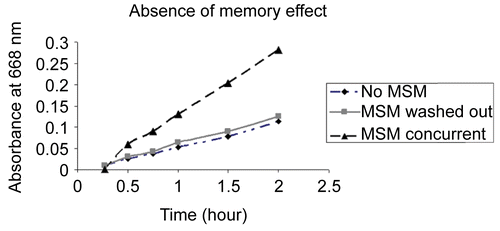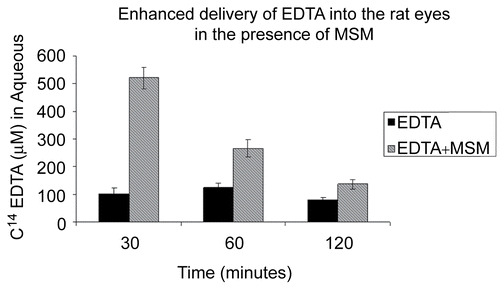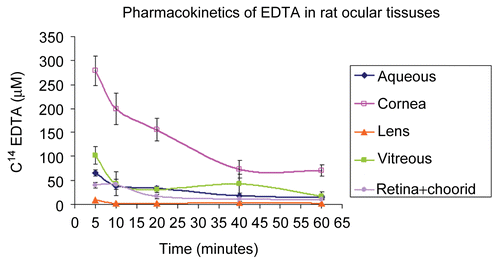Figures & data
Figure 1. Higher concentrations of methylenesulfonylmethane increased the rate of transport of methylene blue 1 mg/ml across a porcine intestinal membrane as measured with a spectrometer set at 668 nm over a 2-h time period.
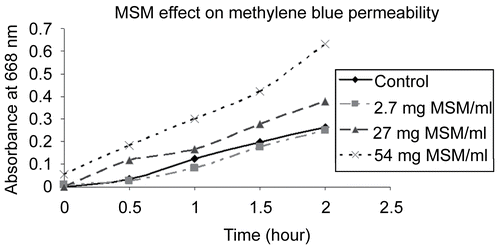
Figure 2. Methylenesulfonylmethane (MSM) increased the rate of transport of ciprofloxacin 0. 5 mg/ml better than ciprofloxacin alone across a porcine intestinal membrane as measured with a spectrometer set at 275 nm over a 2-h time period.
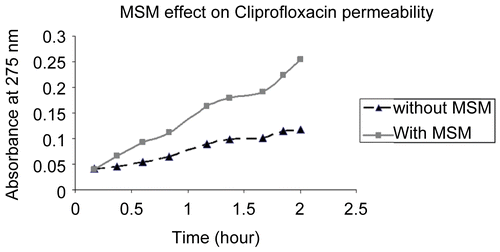
Figure 3. Study determined if the porcine intestinal membrane impermeability recovered after exposure and removal of MSM. Membrane soaked in MSM for 24 h then washed was no more permeable to methylene blue than control solution of methylene blue without MSM. Concurrent MSM increased the permeability of methylene blue through the membrane.
